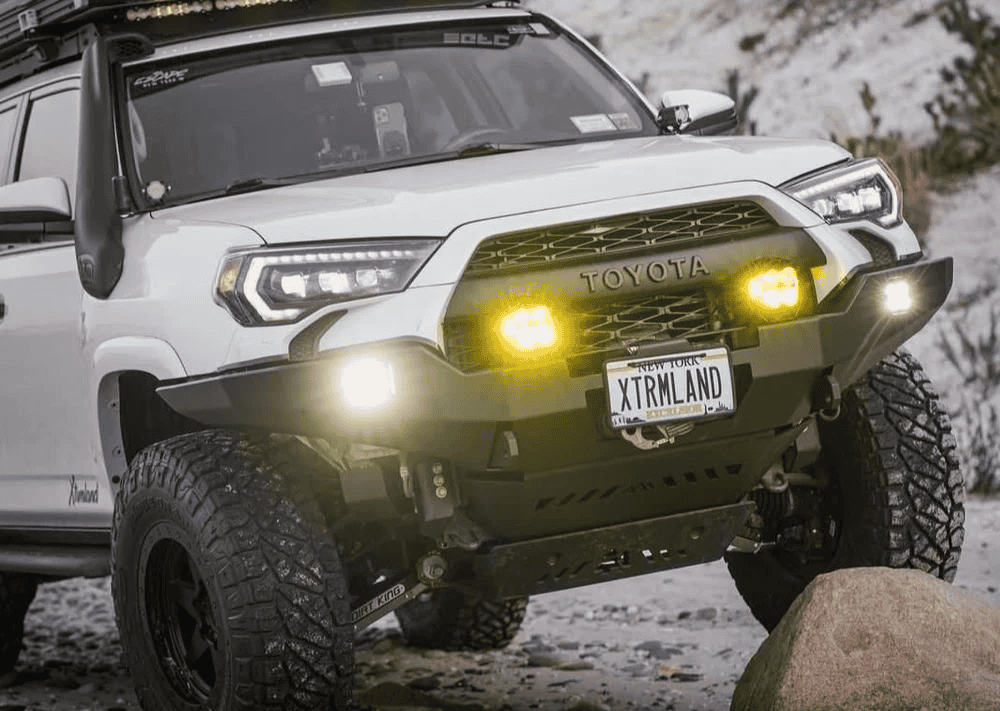Overland Vehicles

An overland work truck build starts with a clear mission. Are you supporting field crews for utility inspections, trail crews in mountains, or site managers moving between remote projects? Mission drives gear, range, and the balance between payload and comfort.
Choose a platform that fits the job. Half ton trucks handle lighter equipment and long highway days. Three quarter and one ton platforms carry heavier tools, service bodies, and canopy systems while keeping axle ratings happy. Consider wheelbase and cab size for turning radius and interior storage. Bed length dictates drawer capacity, compressor placement, and spare tire strategies.
Payload math comes next. Workloads add up quickly: tools, fasteners, power packs, water, fuel, recovery kit, roof rack components, and protection. Keep a spreadsheet that lists item weight, location, and frequency of use. Stay under GVWR and axle ratings, and aim for a balanced load front to rear. A stable truck is safer off road and easier on brakes.
Terrain and climate sharpen the spec. Long washboard demands tuned shocks and strong tire sidewalls. Forest work with steep grades favors low range gearing and traction management. Desert heat pushes cooling, shade awnings, and dust sealing to the front. Snow and clay demand aggressive tread and reliable recovery anchors.
Build only what earns its keep. Focus on the systems that keep crews moving, powered, and safe.
Work trucks carry dynamic loads. Match springs and shocks to loaded weight, not empty curb mass. Quality shocks manage heat on corrugations, while progressive leaf packs or helper systems keep ride height and stability consistent. Tires are a foundation piece: choose load range E or higher with a tread that clears the terrain you see most. Carry a full size spare and a patch kit. Skid plates guard the vital bits, and a front winch bumper adds recovery and cooling protection without sacrificing approach angle.
Field work is quieter and safer with a dedicated house power system. A 12 volt lithium bank with smart alternator charging runs radios, laptops, sensors, and lights for hours. Add a pure sine inverter for tools that need AC and a small solar input to top off between drives. Scene lighting matters after dusk: perimeter flood lights, a focused work light at the tailgate, and amber options for dust or snow. Confirm communications coverage with dual band radios, a cellular booster, and satellite connectivity for truly remote check ins.
Time saved at the site is profit. Modular drawers keep hand tools low and accessible. Bed racks or canopies carry ladders, cases, and long stock while keeping heavy gear near the axle centerline. Use labeled bins and foam cutouts for essential tools. Mount an onboard air compressor for tires and pneumatics, and include quick disconnects on both sides of the truck. A fold out bench, vise mount, and sealed parts storage turn the bed into a mobile workstation.
Distance and reliability separate a good build from a great one.
Extended routes call for sensible range. Auxiliary fuel solutions increase reach without pushing axle limits; water storage supports crews and cleaning gear. Insulate canopies and add ventilation for electronics. In cold seasons, a compact air heater keeps batteries and humans warm during overnight staging.
Recovery gear is insurance. A properly rated winch, soft shackles, kinetic rope, and traction boards cover common stuck scenarios. Pair that with upgraded pads and rotors sized for weight. Lockers or a refined limited slip help slow technical climbs without wheelspin. Keep approach, departure, and breakover angles in mind when placing tanks or storage.
Plan for service intervals at loaded weight. Grease points, shock inspections, and torque checks keep downtime low. Confirm lighting and load compliance for your jurisdiction, especially if the truck is commercially registered. Budget in stages: start with suspension, tires, and safety, then add storage and power once the mission proves itself. A staged approach keeps the build aligned with real field feedback.
A smart overland work truck build is a set of choices that make long days simpler and safer. Platform selection, payload discipline, suspension tuning, power planning, and tool organization all point toward predictable performance in remote places. When the sketch on paper becomes a reliable truck, crews waste less time, morale improves, and projects stay on schedule.
If you want support from a shop that speaks both trail and job site, explore our overland rigs. For tailored solutions like suspension tuning, power systems, storage, and protection built around your workload, see our custom overland upfit. Curious about process, craftsmanship, and client care from discovery to handoff in Fayetteville? Read why choose OZK Customs.
We design and build complete custom rigs and focused partial upfits. Bring us your mission, payload targets, and route profile. We will map a system that carries tools cleanly, powers your day quietly, and travels confidently when pavement ends. Submit the form to start the conversation and schedule your build path.
Ready to spec a work truck that conquers job sites and backcountry routes without compromise? Tell us how you use your rig, and OZK Customs will design a purpose built overland platform with the right suspension, power, storage, and protection. Submit the form to start your build plan and lock in your production slot.
ADDRESS:
6159 E Huntsville Rd, Fayetteville, AR 72701
PHONE:
(479) 326-9200
EMAIL:
info@ozkvans.com